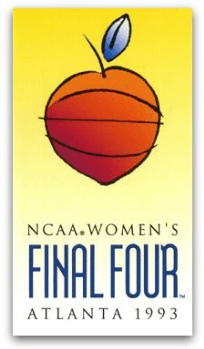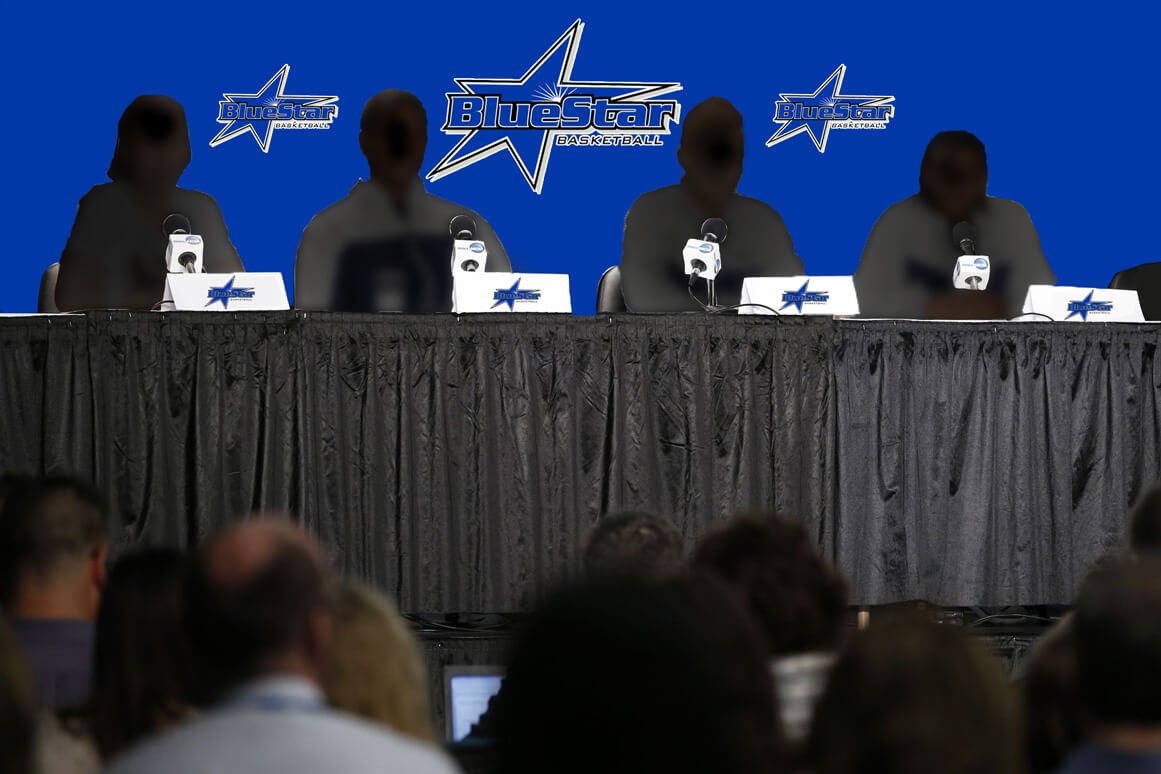Every day I walk by a poster of the 1993 Women’s Final Four. It’s on a wall in a hallway at home, and for the most part I don’t really notice it.
But when I passed by the other day, the year just stared at me—1993—and I stopped in my tracks and thought: “Wow. It’s been 25 years.”
And so it has. A quarter-century since my city played host to the first Women’s Final Four that was sold out in advance.
All four teams were making their first Final Four appearances: Iowa, Ohio State, Texas Tech and Vanderbilt.
After a couple of lackluster Final Four setups, where attendance dipped to less than 8,000 in New Orleans and television scheduling produced morning tip times in Los Angeles, the NCAA was trying yet another first-time city.
CBS, which aired the Women’s Final Four, demanded the semifinals and finals be played on back-to-back days, Saturday and Sunday. It wasn’t about to give up Friday prime time over-the-air space for women’s basketball.
Barely into its second decade sponsoring women’s basketball, the NCAA was searching for a formula to make the Women’s Final Four a more nationally prominent event.
The 20,000 or so who showed up in Knoxville in 1990, my first Final Four, came largely at the behest of Pat Summitt, and some people in the sport were fearing that occasion would become an anomaly.
Sheryl Swoopes had a lot to do with changing all of that. Her dazzling 47-point performance for Texas Tech over Ohio State in the championship game remains an NCAA record. I remember talking at halftime with Mel Greenberg, who noted of Swoopes’ 23-point first-half performance: “This is better than Cheryl Miller!”
Except that Miller, sadly, never played before even five-figure crowds in leading USC to NCAA titles in 1983 and 1986.
The Omni, the funky, cheesy old building with ugly multi-colored seats torn down long ago, and where Pete Maravich lit up my childhood, was truly electric that first weekend of April 25 years ago. What Swoopes did before 16,141 paying customers helped light up a sport, and got larger the sports world to pay attention to the Women’s Final Four in a significant way.
It was the year the Women’s Final Four became a showcase event, a permanent one, and helped crack open the age of women’s team sports as spectator sports.
Swoopes became the first female player to have a basketball shoe named after her, and three years later, she and the U.S. Olympic team would romp to the gold medal right next door, at the Georgia Dome.
The following year, Swoopes and other marquee former college stars helped launch the WNBA. The 1999 Women’s World Cup rocked the nation, as soccer joined basketball in becoming high-profile team sports for women with growing spectator appeal.
It was a hell of a decade for women’s sports in this country, and laid the foundation for the growth of women’s college basketball in spectator and media terms that have been unprecedented.
In the middle of it all, and two years after Swoopes’ exploits, came UConn’s first national championship. The ESPN bandwagon was to follow soon after that, and we all know the rest of the story.
Interestingly that 1992-93 season is prophetic for other reasons that resonate today. That was the last season UConn failed to reach the Sweet 16, and the last time the Huskies lost two consecutive games.
Of the many UConn superlatives, that’s as stunning as anything.
Also consider this: Rebecca Lobo was a sophomore that season, having arrived in Storrs right after Geno Auriemma’s first Final Four season in 1991.
Now she’s a lead analyst for ESPN‘s women’s basketball coverage, Auriemma has taken UConn to a record 11th consecutive Final Four (and 19th overall, eclipsing Summitt) and so many are so excessively wound up in an endless loop about a ridiculous narrative that we have taken what’s transpired over the last 25 years almost for granted.
As I wrote last week, the issue of media coverage of women’s college basketball has become so riddled with phony outrage that it’s begging, pleading, crying out for some historical perspective.
Yet media wokesters relatively new to the sport prattle on, dutifully turning a beautiful game into a grim crusade of cultural identity politics.
Race! Gender! Sexuality!
“We’re” actually not having any wrong conversation about the sport. It’s being vulgarized by the forces of myopic bean-counting and victim-mongering.
What that 1993 Women’s Final Four helped usher in was the placement of women’s basketball into the “national sports conversation” on a permanent, if not always regular, basis. That it doesn’t get discussed much except now, during the week of the Final Four, isn’t an “artificial construct.”
If sports media decision-makers are on the “hook” for anything, it’s to schedule programming and coverage that reaches the biggest possible number of customers so their companies can make money to continue employing them. This is how commercial enterprises of all kinds operate.
Insisting that they play a numbers-based game of hollow representation is what’s artificial.
Those who declare without foundation that women’s basketball is blacked out these days should step back in time to those heady days of a couple decades’ back, when the media and spectator landscape for the game was being remade in revolutionary fashion.
I was thrilled to have a seat on press row for most of it. While the NCAA struggles at times with attendance and TV ratings and venues and how to showcase the women’s tournament, those are problems of a different kind, certainly not of alleged invisibility.
This weekend’s Final Four in Columbus appears to be one for the ages, with four No. 1 seeds. While UConn is the favorite, it wouldn’t be an upset if Louisville, or Mississippi State, or Notre Dame, hoists the NCAA trophy Sunday night.
They are that evenly matched, and so talented and so well-coached. It will be a marvelous treat, and it needs to be enjoyed for what it is.
No overly heavy social meaning. But ike Swoopes pirouetting on that floor at The Omni 25 years ago, basketball, pure and simple. A glorious expression of how well women can play the game, and on an expansive national stage that keeps getting brighter.
Wendy Parker is a sportswriter and web editor who has covered women's basketball since the early 1990s. She is a correspondent for Basketball Times and formerly covered women's and college sports, soccer and the Olympics at The Atlanta Journal-Constitution. She is the author of "Beyond Title IX: The Cultural Laments of Women's Sports," available on Amazon, and the creator of Sports Biblio, a blog about sports books and history.




